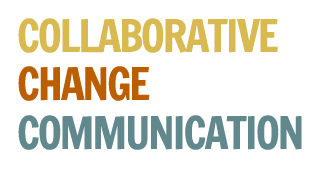technical papers
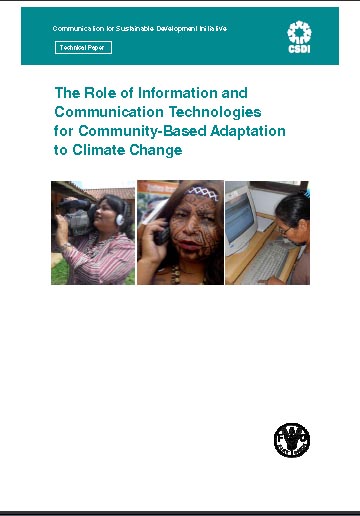 [2011] This publication is a state-of-the-art overview on the application of communication and ICTs for community-based livelihood adaptation to climate change. It is crucial to identify information and communication systems, particularly for poor smallholder farmers, in order to have access to scientific and technological advances that can support their agricultural decision-making. As a result, research must be reported and communicated in such a way that policy makers can support the adaptation of the food systems to climate change.
[2011] This publication is a state-of-the-art overview on the application of communication and ICTs for community-based livelihood adaptation to climate change. It is crucial to identify information and communication systems, particularly for poor smallholder farmers, in order to have access to scientific and technological advances that can support their agricultural decision-making. As a result, research must be reported and communicated in such a way that policy makers can support the adaptation of the food systems to climate change.The first section explains the role played by Information and Communication Technology (ICT), in the adaptation or mitigation of climate change and examines the potential use at regional or local levels. The second section describes the steps of using ICTs at the community level to communicate information about climate change. Specifically, it describes seven actions where ICT can be of use. But for these steps to be effective, they must be framed in the context of integrated Communication for Development processes in order to bring about positive social change. This publication concludes that this is indeed an area for pioneers with the potential for much further development.
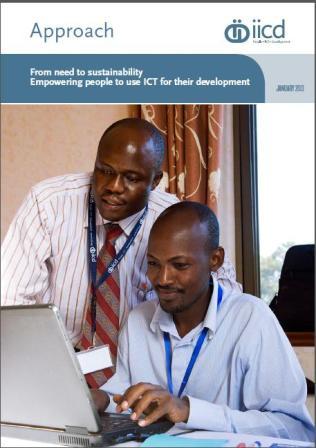 [2013] IICD has more than 15 years of experience using a distinctive participatory and multi-stakeholder approach to ICT for Development (ICT4D). Whereas many ICT4D projects focus on the transfer of new or innovative technologies, IICD focuses on the people facilitating a process in which stakeholders co-create and implement their own ICT solutions. Core principles of this approach include: learning by doing, gender sensitivity, knowledge sharing.
[2013] IICD has more than 15 years of experience using a distinctive participatory and multi-stakeholder approach to ICT for Development (ICT4D). Whereas many ICT4D projects focus on the transfer of new or innovative technologies, IICD focuses on the people facilitating a process in which stakeholders co-create and implement their own ICT solutions. Core principles of this approach include: learning by doing, gender sensitivity, knowledge sharing.This document provides a summary of IICD approach towards ICT for development which consists of six phases that are collectively called a ‘social innovation process’. The six phases are: (1) needs assessment, (2) project formulation, (3) implementation and pilots, (4) embedding, (5) scaling up and (6) systemic change.
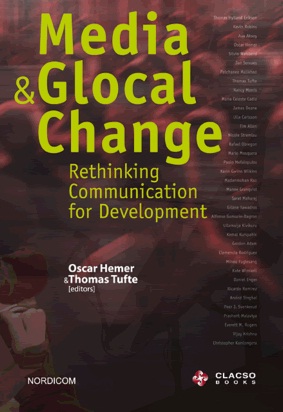 [2005] This book is about exploring both the potential and the limits of communication, of using communication both as a tool and as a way of articulating processes of development and social change, improving everyday lives, and empowering people to influence their own lives and those of their fellow community members.
[2005] This book is about exploring both the potential and the limits of communication, of using communication both as a tool and as a way of articulating processes of development and social change, improving everyday lives, and empowering people to influence their own lives and those of their fellow community members.According to the editors of this book, the discipline of communication for development is currently at a crossroads, and the approaches taken over the last few decades require serious rethinking. The publication is intended as a contribute to the critical reflection about how communicaction works for social change processes within the context of globalization and technology innovation.
 [2008] This book is based on the conclusion that ethics are nothing but a series of moral qualities. In the first chapters the author tries to define ethics and professional values as they relate to mass media and community broadcasting.
[2008] This book is based on the conclusion that ethics are nothing but a series of moral qualities. In the first chapters the author tries to define ethics and professional values as they relate to mass media and community broadcasting.The book also looks at the legal context for information provision and in particular outlines the efforts surrounding the enforcement of ethnics in Nepalese journalism as compared with the codes of conduct in other countries.
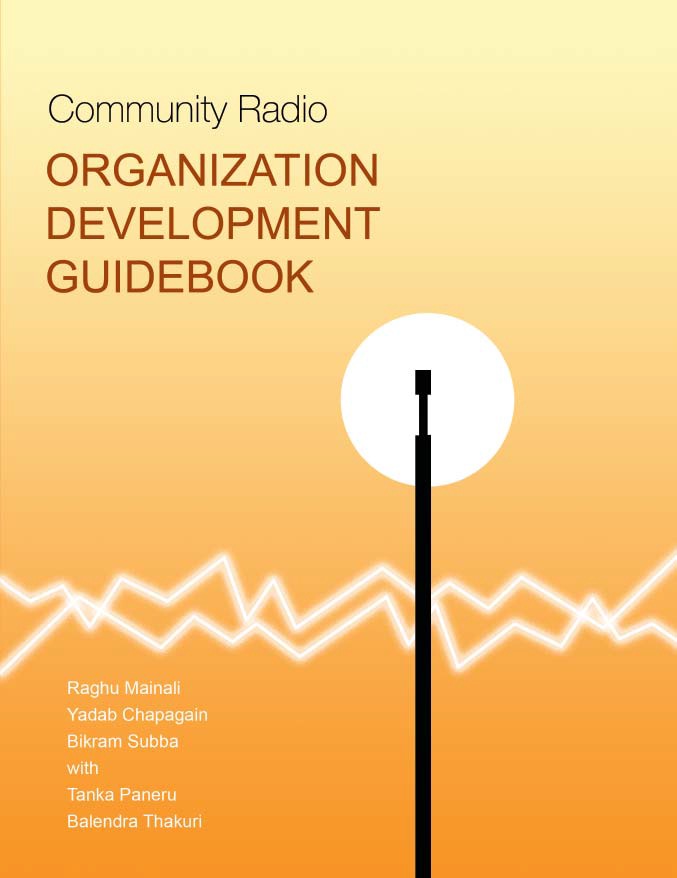 [2009] This book was developed by the Community Radio Support Center (CRSC) to improve performance, efficiency and effectiveness of emerging community radio stations in Nepal. It is designed to guide a radio station in areas such as vision and mission development, human resource management policy, documentation, knowledge management and editorial policy.
[2009] This book was developed by the Community Radio Support Center (CRSC) to improve performance, efficiency and effectiveness of emerging community radio stations in Nepal. It is designed to guide a radio station in areas such as vision and mission development, human resource management policy, documentation, knowledge management and editorial policy.It is structured to help answer questions such as
What does it take to establish a functional organisation?
How should a radio station treat and motivate staff members?
How does a station win public support?
A roadmap, methodological suggestions and concrete examples are presented as part of its approach.
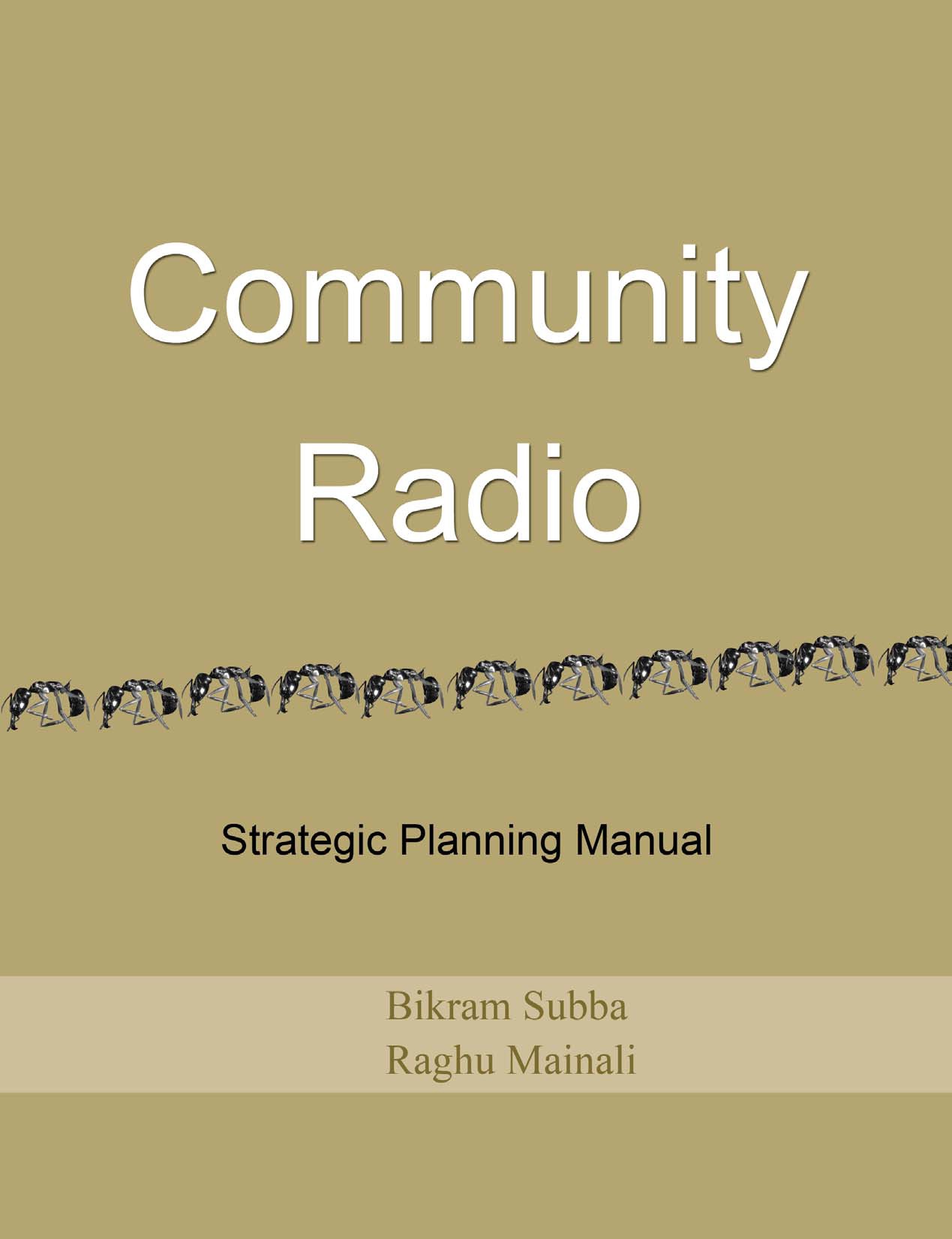 [2008] This manual was prepared for officials and managers of community radio (CR) stations in Nepal but can be adapted in response to locally-specific needs to guide the formulation of strategic plans for any type of local radio stations.
[2008] This manual was prepared for officials and managers of community radio (CR) stations in Nepal but can be adapted in response to locally-specific needs to guide the formulation of strategic plans for any type of local radio stations.The first chapters introduce the definition, policy, legal provisions and limitations of a CR strategic plan. Analytical steps such as stakeholder analysis and analysis of opportunities and challenges of CRs are included in chapter 3. The last chapter defines technical aspects of strategic plans such as visioning, hierarchy of objectives, success indicators, identification of risk factors and risk mitigation measures, operational strategies and areas of collaboration, responsibility matrix and M&E system.
 [2008] This book is a guide to improving community radio's financial standing. Along with traditional marketing techniques, more creative and constructive concepts are needed. Community radio stations cover geographically small areas and don't have to compete for listeners, instead they usually share mission and objectives. Collective marketing is a good strategy to minimize operational costs and enhance outreach.
[2008] This book is a guide to improving community radio's financial standing. Along with traditional marketing techniques, more creative and constructive concepts are needed. Community radio stations cover geographically small areas and don't have to compete for listeners, instead they usually share mission and objectives. Collective marketing is a good strategy to minimize operational costs and enhance outreach.The guide was produced by the Community Radio Support Center of the Nepal Forum of Environmental Journalists (NEFEJ) and was first published in Nepali in 2006. It includes a chapter on the status of community radio in Nepal and on challenges, potential and success stories of collective marketing.
 [2007] Grassroots comics are made by community or NGO activists to be used in local campaigning for development.
[2007] Grassroots comics are made by community or NGO activists to be used in local campaigning for development.This book draws on the experience of World Comics Finland and World Comics India and the initiatives realized with the co-operation of many different organizations, movements and activists. It shows samples of grassroots comics, practical manuals and photographs from Asia, Africa and other countries to give the readers an idea of what grassroots comics are and how they can be used as a low-cost but powerful communication tool for development.
The book explains the methods and gives practical advice on how to go about organizing workshops and making grassroots comics with local communities. Most activists can learn the methods in a few days: what is central is not the drawing skill but the story and its message.
Read the full ComDev Asia article on Comics Power!
 [2012] Jeffrey Sachs, Director of the Earth Institute at Columbia University, has described the mobile phone as the “single most transformative tool for development”. This publication by Save the Children and the Vodafone Foundation explores how to overcome obstacles to the effective use of mobile phone technology in emergency response, in relation to distribution of cash to support food security and livelihoods, information sharing, two-way communication with affected communities, and other potential integrated services.
[2012] Jeffrey Sachs, Director of the Earth Institute at Columbia University, has described the mobile phone as the “single most transformative tool for development”. This publication by Save the Children and the Vodafone Foundation explores how to overcome obstacles to the effective use of mobile phone technology in emergency response, in relation to distribution of cash to support food security and livelihoods, information sharing, two-way communication with affected communities, and other potential integrated services.The report draws on interviews with emergency response staff in six countries to argue that, in order to realise the potential of mobile phones in emergency response, emphasis should go on: increasing accountability, building preparedness and prioritising collaboration. It also provides recommendations for the humanitarian sector to realise the transformative potential of mobile phones more fully.
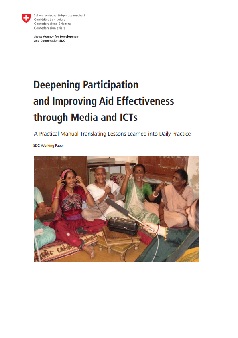 [2007] After more than ten years of support for a people-centered approach to embedding modern ICTs within Poverty Alleviation Programs, the Swiss Agency for Development and Cooperation (SDC) has reviewed project reports, study program evaluations and meta-evaluations, in order to distil lessons learned on how ICTs can really help to improve development cooperation programmes and more particularly to enhance voice and accountability programs.
[2007] After more than ten years of support for a people-centered approach to embedding modern ICTs within Poverty Alleviation Programs, the Swiss Agency for Development and Cooperation (SDC) has reviewed project reports, study program evaluations and meta-evaluations, in order to distil lessons learned on how ICTs can really help to improve development cooperation programmes and more particularly to enhance voice and accountability programs.Powered by Phoca Download
